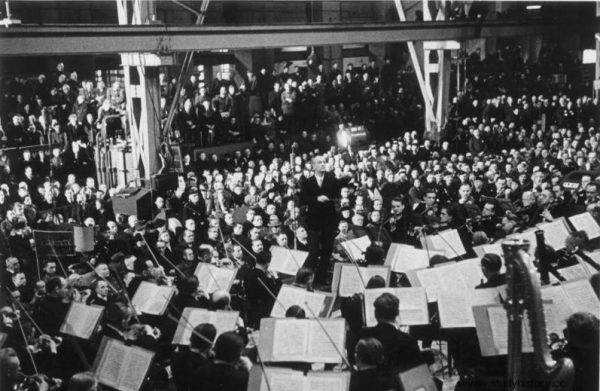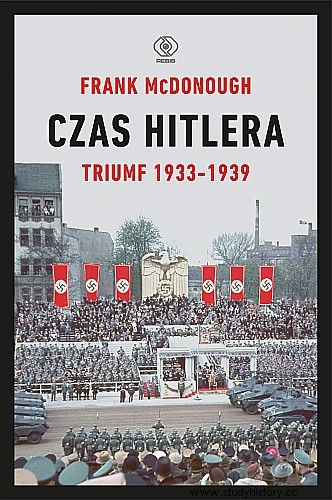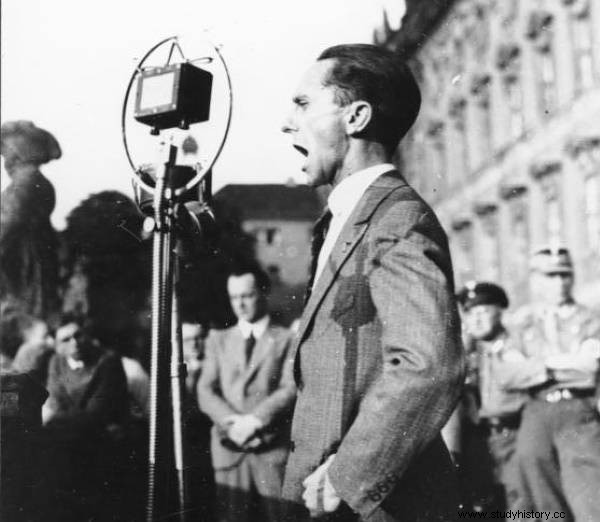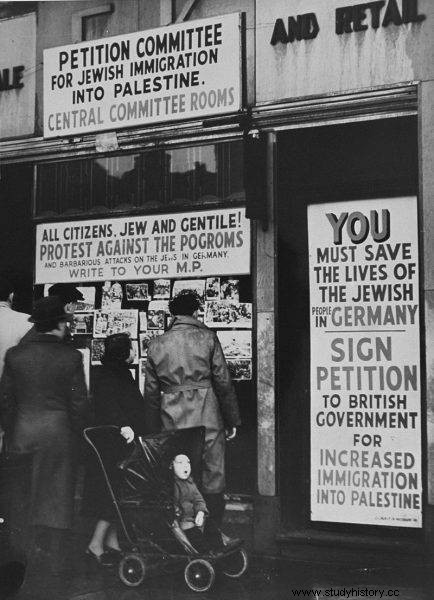The night of November 9-10, 1938, was for the Jews the beginning of the terror that had been planned for a long time by the Third Reich government. Two days later, Herman Göring announced that the "Jewish problem" would be dealt with comprehensively and then finally resolved.
The year 1933 was an extremely important time for German Jews. After Adolf Hitler came to power, none of his supporters concealed their dislike of this nation. His representatives began to be fired.
Frank McDonough in his latest book, Hitler's Time. Triumph 1933-1939 ”quotes the words of Arnold Biegelson - a Jew who was in an extremely difficult situation at that time:“ I was twenty-five years old and working as a clerk when in 1933 trouble began. I had a good job. But when Hitler came on the scene, my career plans backfired ". Arnold Biegelson eventually decided to emigrate to Argentina.
The broadly understood purges of Jews and supporters of socialism also took place at universities. By September 1933, 1,145 lecturers lost their jobs, which constituted about 15% of the academic staff. On April 25, the Act against overcrowding in German schools was passed. Its aim was to reduce the number of Jewish education, but at that time it was not yet dared to say it outright. The act assumed that the number of students and pupils of "non-Aryan" origin should be reduced by 1.5% - as a result, the number of Jews at German universities and schools was halved.
Cultural purge
On May 13, 1933, Joseph Goebbels was appointed minister of public enlightenment. Soon after, a large-scale purging began in German culture. Concerts by famous musicians such as Otto Klemperer were canceled. On April 6, the Hamburg Philharmonic Society issued a statement that Jewish soloists would no longer perform on their stage.
Any objections were reacted in a balanced and calm manner. When Wilhelm Furtwängler, conductor and composer of the Berlin Philharmonic Orchestra, published an open letter to Goebbels in which he protested against his actions , received a remarkably subdued response that even despite the resistance, "he will always have his place in the Third Reich."

The purge in German culture included, among others philharmonics and operas.
Then Fürtwängler… was drawn into the propaganda machine. The matter died down with time, and the Berlin philharmonics came under state control. Including the aforementioned musician, who remained in their ranks until the end of the Third Reich. And although he never joined the NSDAP, he was still widely criticized by "non-Nazi" colleagues.
The purges took place one after another in all areas of German culture, and were carried out in these areas most widely and thoroughly.
Cargo pants under arms
In 1933, brutal actions of the NSDAP Assault Troops (German:Sturmabteilung, SA for short) began, aimed at persecuting and murdering Jews. It took the militants a week after Hitler took power to take the law into their own hands. By June 1933, 43 people of Jewish origin had been killed. They demolished houses and brutally showed Jews that they were not welcome in Nazi Germany.
In 1933 alone, 37,000 Jews emigrated from Germany. "There was no room for us there anymore," Hans Peter Herz, a half-Jew recalls in his book "Hitler's Time". "They [SA] broke our kitchen windows and the glass above the front door. On the door they scratched a star of David and the inscription »Juden Raus« [»Jews won«] ”.
Anti-Semitism was so common in the ranks of the NSDAP that even one of the SA battle chants contained the following words:"When Jewish blood spurts out from under the knives, the good times will come again."

The text was created, among others based on Frank McDonough's book Hitler's Time. Triumf 1933-1939 ”, which has just been released by the Rebis publishing house.
The already existing concentration camps could also "pride themselves on" brutality, but efforts were still made to hide it from the international public opinion. Nevertheless, the American journalist Edgar Mowrer, based on the story of one of the Jewish prisoners of the Dachau camp, described in detail in the "Chicago Tribune" the treatment of inmates.
In reaction to the publication, a visit to Dachau was organized, during which foreign reporters were to find out about the truthfulness of the allegations. A New York Times correspondent characterized the camp atmosphere as "something between a strictly disciplined regiment and a hard-work prison."
Boycott of interests
Over time, the foreign press began to write about anti-Semitic activity in Germany. There was even an anti-Nazi demonstration held in New York's Madison Square Garden. However, it brought completely opposite and unforeseen results at the time.
In response to international objections, Goebbels announced a one-day boycott of Jewish interests in Germany. On April 1, 1933, he noted in his journals:"All Jewish stores are closed . There are SA posts in front of the entrances. The audience shows solidarity everywhere. ”

Goebbels in response to international protests announced a one-day boycott of Jewish interests
It will hardly surprise anyone that the British ambassador to Berlin, Sir Horace Rumbold, had a completely different opinion on the same day. He argued that the boycott was not very popular.
To express support for the Goebbels initiative, 150,000 workers were called to protest against "foreign slander." On the same day in the evening, in support of the streets of Berlin, another march, this time 100,000 members of the Hitler Youth, marched.
Change in minds
In total, in 1933, 80 legal regulations explicitly directed against Jews were introduced. In the following year, due to the brutal actions of the SA, these sanctions were reduced to 15, but this was only a temporary relaxation of the approach to the "Jewish question" - due to increasing criticism from outside.
As early as 1935, a wave of anti-Jewish protests swept through Germany . At that time, there were riots, shops were demolished and offensive anti-Semitic slogans were written. Puppets were burned in the streets , Jewish cemeteries were devastated. Munich occupied a special place in these activities, on the streets of which "scenes straight from the Wild West were held.

Protests in Great Britain after Kristallnacht
The main groups involved in the riots were SA militants, members of the Hitler Youth and Austrian Nazis in exile. In the book "Hitler's Time" we can find the words of a conspiratorial representative of the Social Democratic Party of Germany in Bavaria, with which he described the disturbing changes in people's minds:
The persecution of Jews has not met with any active reaction from the population. On the other hand, however, they are not completely unaffected by it. Racial propaganda leaves its traces imperceptibly. People cease to be impartial towards Jews and many say to themselves:the Nazis are actually right that they are fighting the Jews.
And from such a shift in the thinking of the nation, there was already a short path to the events that took place on the night of November 9-10, 1938.
Doom-Forerunner Crystals
Kristallnacht began at 10:50 pm on the initiative of party and state authorities. 91 Jews were murdered, about 1,000 synagogues were set on fire, 267 of which were destroyed. Nearly 7,500 out of 9,000 Jewish shops were demolished. In the book "Hitler's Time. Triumph 1933-1939 "Frank McDonough quotes the words of Hugh Greene, the Berlin correspondent of the Daily Telegraph, who witnessed the events of that fateful night:
Berlin was lynched all afternoon and evening, with hordes of hooligans indulging in an orgy of destruction. In the past five years, I have seen several anti-Jewish riots in Germany, but never anything as disgusting as this.
Kristallnacht was a way to "crystallize" the German people and purify the race. It also owes its name to the shards of glass and crystals that spilled then on the streets of German cities from Jewish shops and apartments. And that was just the beginning.
